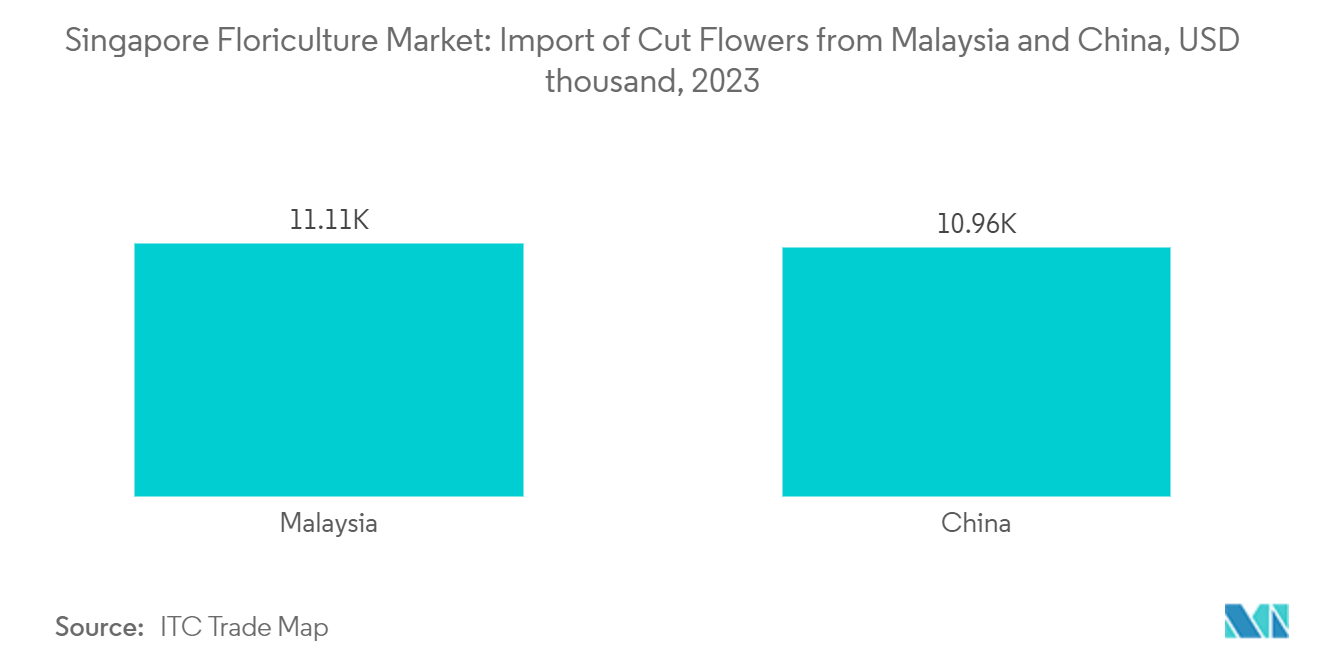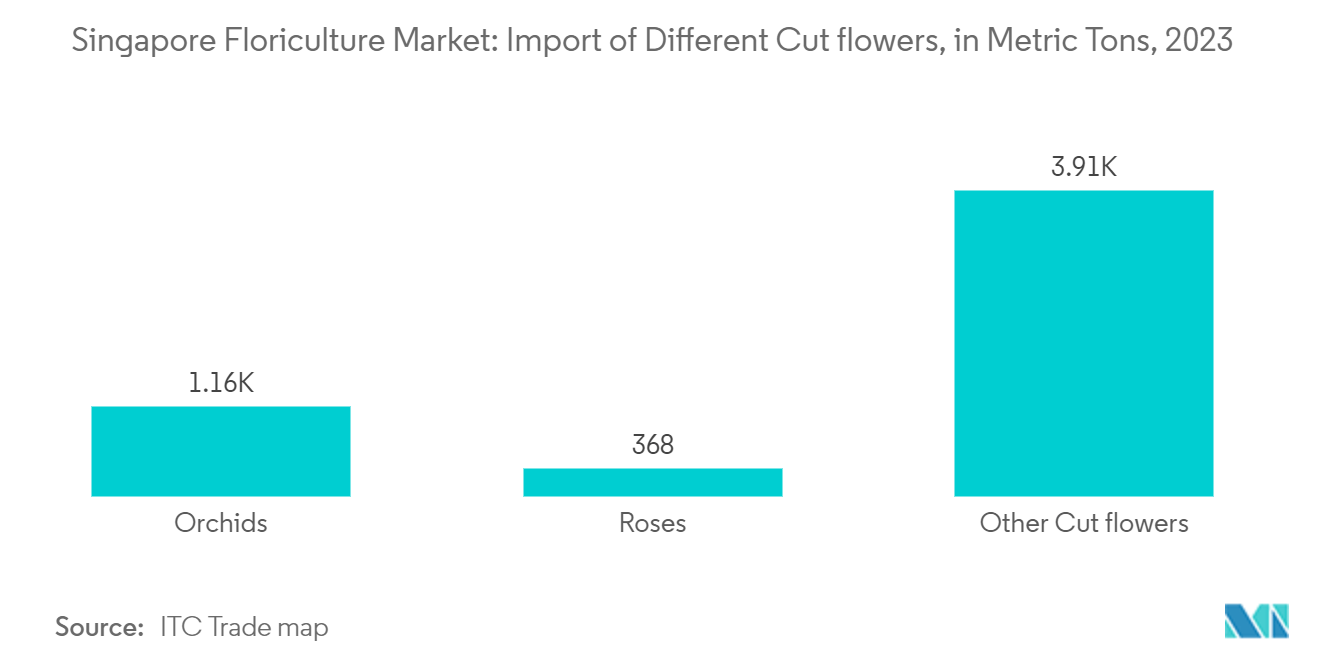Market Trends of Singapore Floriculture Industry
Malaysia and China are the Major Exporters of Flowers to Singapore
The import of flowers into Singapore from Malaysia and China plays a significant role in meeting the country’s demand for fresh flowers, which are widely used for various purposes, including decoration, religious offerings, and special occasions. Malaysia is one of the top sources due to its proximity, which reduces transportation costs and ensures fresher deliveries. In 2023, Malaysia alone accounted for 42.5% of the overall cut flower and flower buds import volume to the country. Orchids, Singapore's national flower, are highly prized and widely imported from Malaysia. Additionally, other flowers such as chrysanthemums and roses are also frequently imported from Malaysia due to the favorable growing conditions in the country that ensure a steady and reliable supply.
On the other hand, China has become increasingly important as a flower supplier, particularly in terms of volume. The country has a well-established flower industry with large-scale production, allowing it to export various flowers to Singapore at competitive prices. The most common flowers imported from China include roses, carnations, lilies, and chrysanthemums. Other cut flowers and buds such as daisies, eustoma, peonies, and others are the most imported flowers from China. For instance, in 2023, Singapore imported other cut flowers and buds worth USD 10,178 thousand from China, which was 92.8% of the total cut flowers and buds imports. Therefore, the import of flowers from Malaysia and China into Singapore is characterized by a strong and mutually beneficial trade relationship supported by favorable geographical, economic, and climatic factors.

Orchids and Roses are Popular Flowers in the Country
Singapore's import and consumption of roses and orchids are influenced by its status as a key trading center in Asia. The demand for these flowers, especially roses and orchids, stems from their cultural significance and role in festivities and as gifts. Singapore grows a substantial number of orchids, reflecting the flower's national value. However, imports of roses are essential to satisfy the local needs, mainly met by nations like Malaysia, Thailand, and Kenya. However, Singapore's orchid production has encountered difficulties due to scarce agricultural land and escalating costs, affecting the local growers' competitiveness. Therefore, the import of orchids increased in the country from 694 metric tons in 2022 to 1,157 metric tons in 2023. Through the National Parks Board (NParks), the government has stepped up efforts since 2018 to help these businesses, including supporting technological upgrades, providing agricultural advisory services, and refining land bidding systems to suit flower growers better. These initiatives aim to sustain and modernize Singapore’s orchid industry in a land-scarce environment.
Singapore's extensive free trade agreements, including those with ASEAN, have also facilitated the smooth import of roses and other flowers. Import tariffs on most goods are either non-existent or minimal, which supports the country's status as a free port. Key players in the floral import business benefit from these trade agreements, ensuring a steady supply of high-demand flowers such as roses from regional and global suppliers. Overall, the demand for roses and orchids, along with the extensive trade agreements, are estimated to increase the import of cut flowers, especially with difficulties in domestic production.


